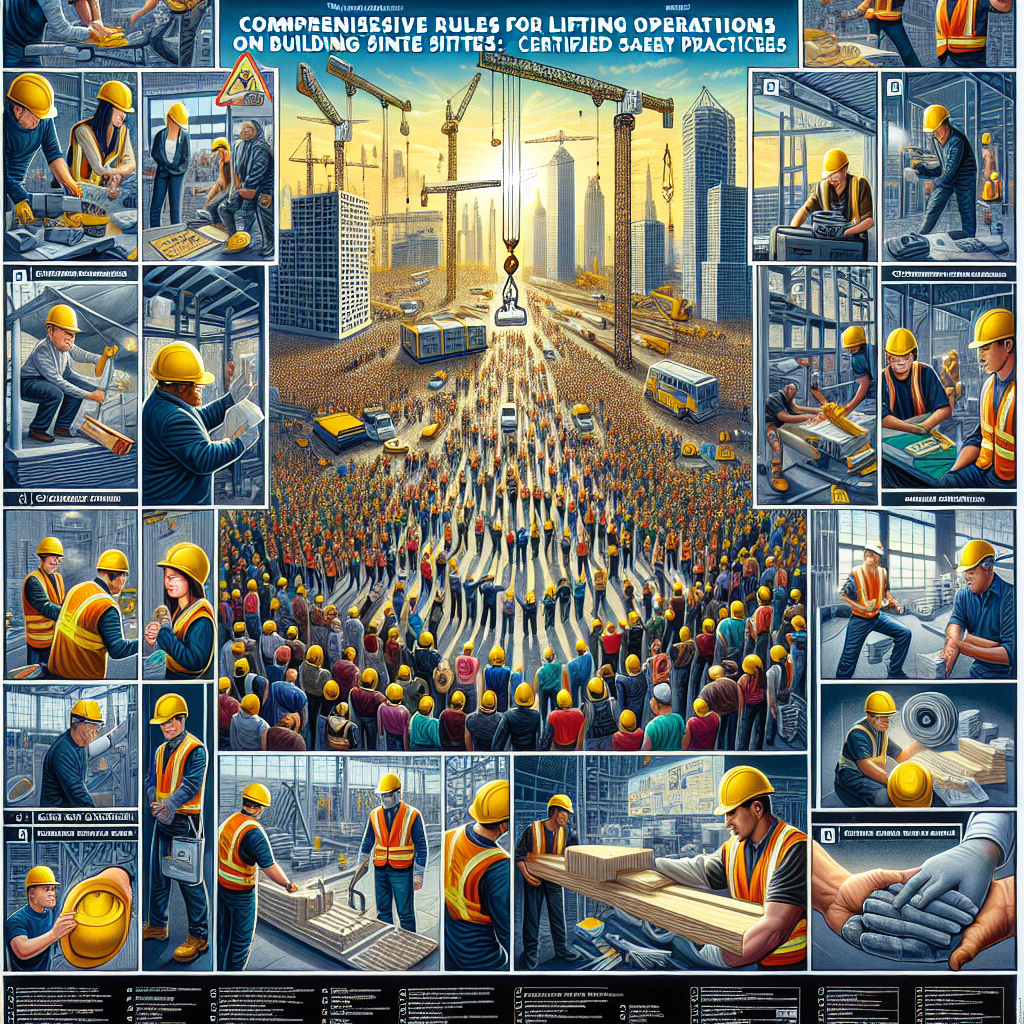Introduction: The Importance of Certified Rules for Lifting Operations on Building Sites
Lifting operations are integral to modern construction projects, enabling the movement and placement of heavy materials, equipment, and machinery. Adhering to certified rules for lifting operations on building sites is not only a legal obligation but also a vital aspect of ensuring site safety, operational efficiency, and risk management. This article provides a detailed guide to certified lifting practices, safety requirements, and regulatory compliance, with a focus on industry-recommended procedures for construction sites.
Understanding Certified Lifting Operations
Certified lifting operations refer to the systematic and documented handling, moving, and positioning of loads on construction sites according to established standards and safety protocols. These operations require thorough planning, competent personnel, and the use of certified lifting equipment. The core objective is to minimize hazards such as dropped loads, equipment failure, and human error.
- Compliance with lifting safety regulations and local construction laws
- Utilization of certified lifting equipment and machinery
- Involvement of competent persons in planning and supervision
Certified Rules and Best Practices for Lifting Operations
1. Pre-Lift Planning and Risk Assessment
Every lifting operation must begin with a comprehensive risk assessment and a lift plan. This includes evaluating potential hazards, defining the scope of work, and identifying necessary controls. Certified plans should address:
- Nature, weight, and center of gravity of the load
- Site-specific hazards (such as overhead power lines or restricted access)
- Selection of appropriate lifting equipment and accessories
- Environmental conditions (wind, rain, and ground stability)
2. Selection and Inspection of Lifting Equipment
Only certified and regularly inspected lifting equipment should be used. This includes cranes, hoists, slings, shackles, and lifting beams. Key requirements include:
- Equipment must have valid certification and inspection records
- Load limits and working load limits (WLL) must be clearly marked and never exceeded
- Pre-use inspections to identify damage, wear, or defects
3. Appointment of Competent and Certified Personnel
Lifting operations must be supervised and executed by trained, competent, and certified personnel:
- Appointed Person (AP): Responsible for planning and safe execution of lifting operations
- Crane Operator: Holds a valid license and experience with specific equipment
- Slinger/Signaller: Guides the load and communicates with the crane operator
Safety Measures and Regulatory Compliance
4. Safe Lifting Techniques and Communication
Effective communication is essential to prevent accidents during lifting operations. Use recognized hand signals, radios, or other communication systems. Follow these certified safe lifting techniques:
- Never stand under suspended loads
- Ensure that loads are balanced and secured
- Keep the path of travel clear of personnel and obstacles
- Use taglines to control loads and prevent swinging
5. Documentation and Record Keeping
Accurate documentation ensures traceability and compliance. Maintain records of:
- Lift plans and risk assessments
- Equipment certification and inspection reports
- Personnel training and certification records
- Incident and near-miss reports
6. Emergency Procedures and Incident Response
Every building site must have a certified emergency plan for lifting operations. This includes:
- Clear procedures for evacuation and first aid
- Immediate reporting and investigation of incidents
- Regular drills to ensure preparedness
Certified Training and Continuous Improvement
Ongoing training is crucial for maintaining high standards in lifting operations. Encourage periodic refresher courses and certification updates for all staff involved in lifting tasks. Regular audits and safety meetings help to identify areas for improvement and foster a culture of continuous safety enhancement.
- Certified lifting operation workshops
- On-site toolbox talks
- Engagement in safety forums and knowledge sharing
Conclusion: Ensuring Safety and Compliance in Lifting Operations
Adhering to certified rules for lifting operations on building sites is essential for protecting lives, preventing damage, and ensuring project success. By following structured procedures, employing certified equipment and personnel, and fostering a culture of safety, construction companies can achieve operational excellence while meeting regulatory requirements. Always remember that safe lifting is a collective responsibility—prioritize certification, training, and vigilance on every building site.
